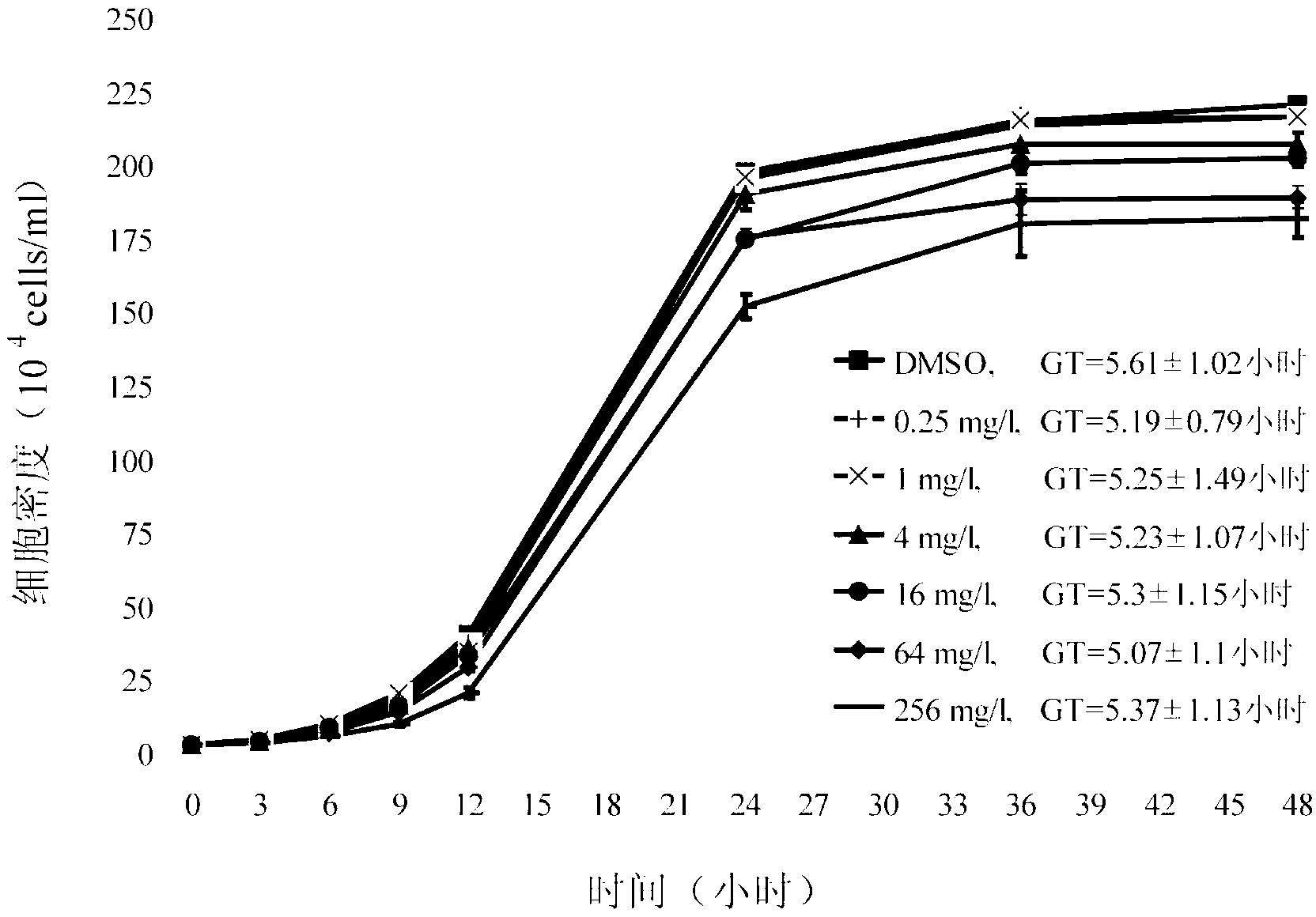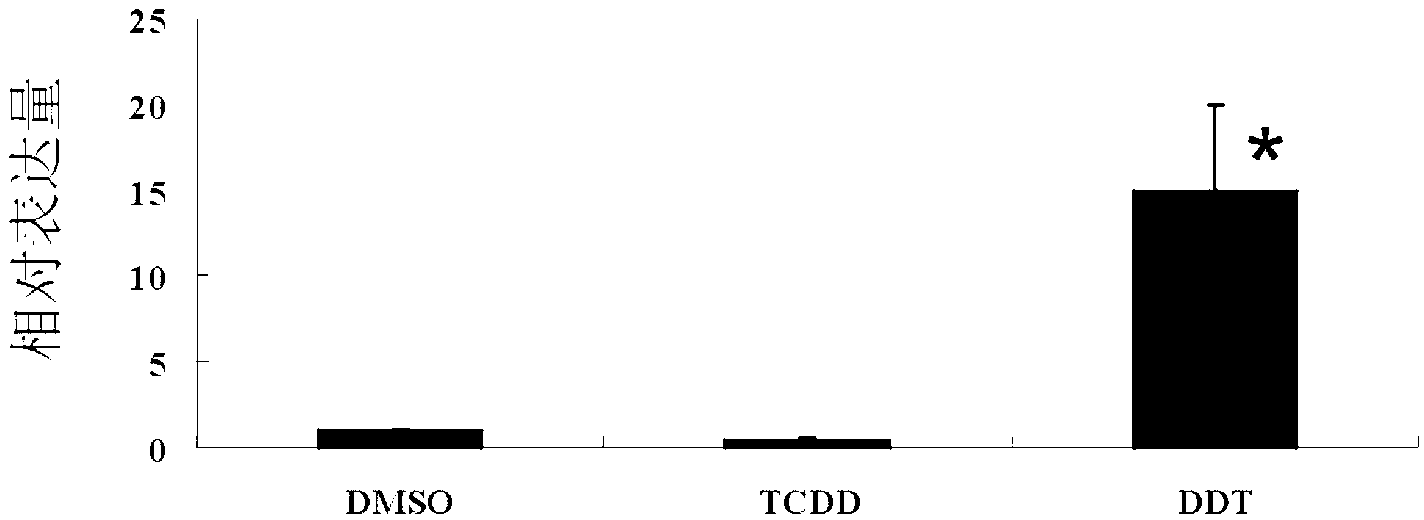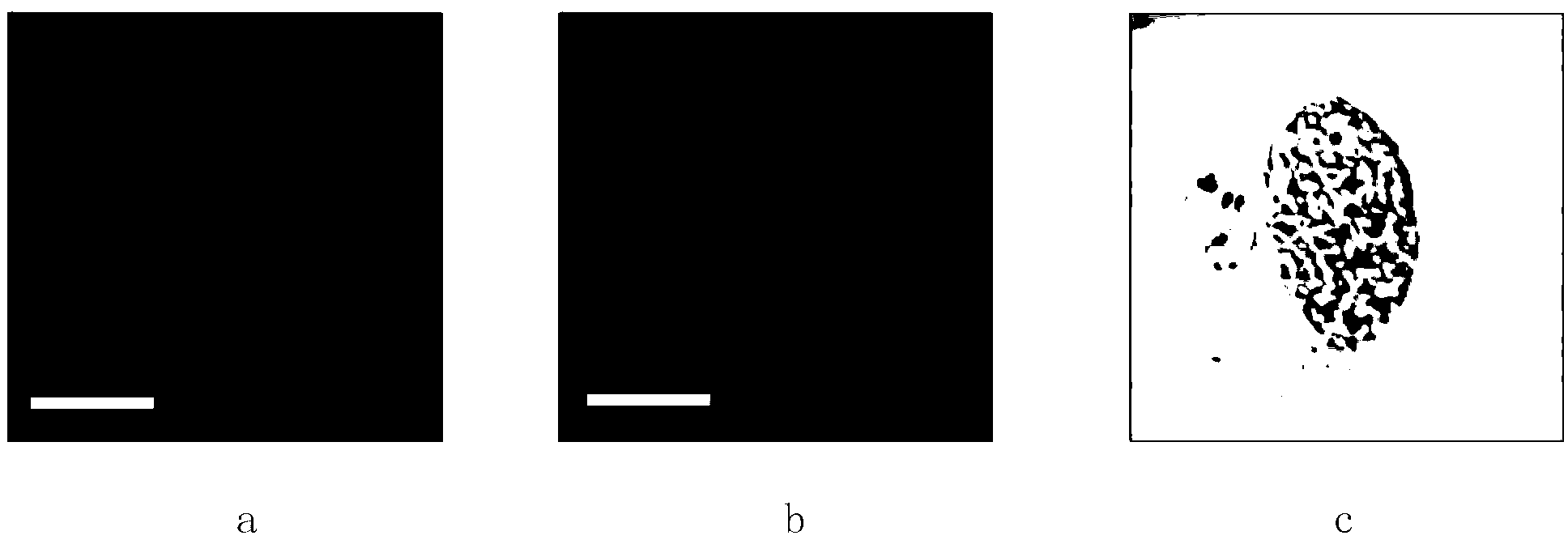CYP5013C2 protein and coding gene thereof, and tetrahymena expressing CYP5013C2 protein
A technology of Tetrahymena and genes, applied in the application field of degrading DDT, can solve the problems such as the increase of DDT concentration
- Summary
- Abstract
- Description
- Claims
- Application Information
AI Technical Summary
Problems solved by technology
Method used
Image
Examples
Embodiment 1
[0036] Embodiment 1, the growth curve of wild-type Tetrahymena under the treatment condition of different concentration DDT
[0037] 1. Dissolve p,p'-DDT in DMSO to obtain a mother solution with a concentration of 0.1M, and store it in the dark at 4°C.
[0038] 2. Inoculate 2 mL of Tetrahymena thermophila SB210 strain in the early logarithmic growth phase into 20 mL of SPP medium, so that the cell concentration of Tetrahymena thermophila SB210 strain is 3×10 4 cells / mL.
[0039] 3. Adjust the concentration of the mother liquor prepared in step 1 with DMSO and add it to the system obtained in step 2, so that the concentrations of p,p'-DDT are 0.25, 1, 4, 16, 64 or 256 mg / L, and set up inoculation, etc. Volumetric DMSO controls.
[0040] 4. Culture the system obtained in step 3 with shaking at 30°C and 90 rpm, take 200 μL of samples after 0, 3, 6, 9, 12, 24, 36 or 48 hours, count with a cell counter, and make a growth curve.
[0041] Tetrahymena can survive when exposed to DD...
Embodiment 2
[0046] Example 2, Screening genes capable of resisting DDT stress from Tetrahymena
[0047] The CU428 strain of Tetrahymena thermophila was used for genome-wide gene expression microarray analysis, and the gene expression was calculated and analyzed with ArrayStar2.0 software. The same volume of DMSO-treated samples was used as the control group, and the up-regulation or down-regulation of DDT exposure was screened out by 2 times. Among the above genes, it was found that the expression level of CYP5013C2 gene was significantly up-regulated under DDT exposure. The CYP5013C2 protein is shown in sequence 1 of the sequence listing, and the CYP5013C2 gene is shown in sequence 2 of the sequence listing. The amino acid codons in Tetrahymena are different from other species. There are three stop codons (tga, tag and taa) in other species, but there is only one stop codon (tga) in Tetrahymena, and both tag and taa encode glutamine.
Embodiment 3
[0048] Embodiment 3, real-time quantitative PCR detects the relative expression level of Tetrahymena CYP5013C2 gene
[0049] The early logarithmic growth phase (3×10 5 cells / mL) of Tetrahymena thermophila SB210 strain for 24 hours, and the same volume of DMSO was used as the control group.
[0050] The total RNA was extracted and reverse-transcribed into cDNA, using the cDNA as a template, real-time quantitative PCR was performed with a primer pair composed of F1 and R1, and the data was collected with Opticon Monitor3 software. Use the Relative Expression Software Tool (REST) software to analyze the changes in the relative expression level of the target gene after correction by 17S rDNA. The mathematical model is based on the difference in the PCR amplification threshold cycle (Ct) between the sample and the control group. The significance of the relative expression level of the target gene was tested by ANOVA (P<0.05).
[0051] F1: 5'-AGTGATTATTGCCTCATTCTTTGG-3';
[005...
PUM
 Login to View More
Login to View More Abstract
Description
Claims
Application Information
 Login to View More
Login to View More - R&D
- Intellectual Property
- Life Sciences
- Materials
- Tech Scout
- Unparalleled Data Quality
- Higher Quality Content
- 60% Fewer Hallucinations
Browse by: Latest US Patents, China's latest patents, Technical Efficacy Thesaurus, Application Domain, Technology Topic, Popular Technical Reports.
© 2025 PatSnap. All rights reserved.Legal|Privacy policy|Modern Slavery Act Transparency Statement|Sitemap|About US| Contact US: help@patsnap.com



